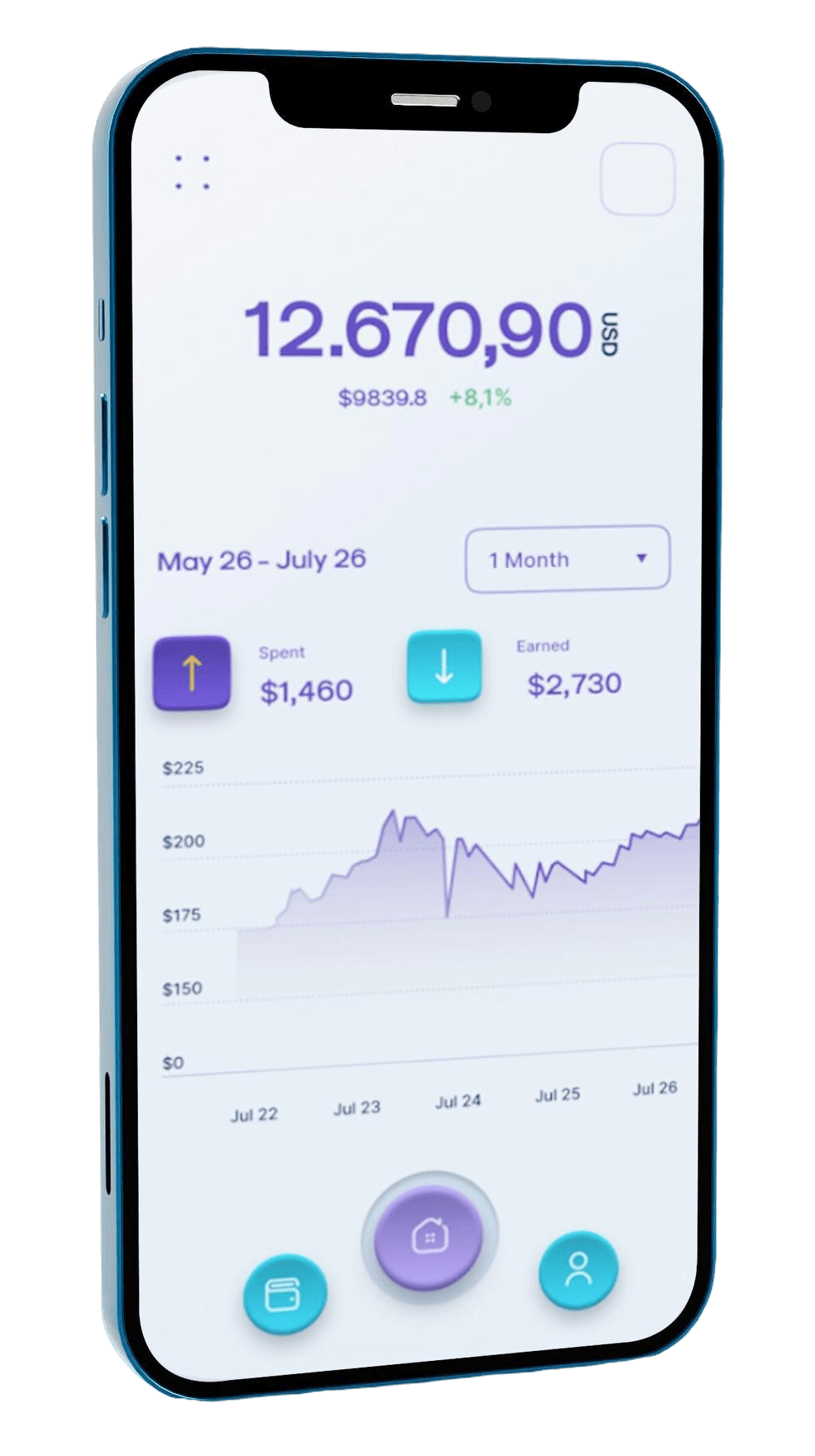The most important thing in brief
-
Types of Investments: Investing is a
way to build wealth. Options include securities,
tangible assets (like real estate or classic cars), and
bank deposits such as daily or fixed-term accounts.
-
Investment Duration: Investments can be
categorized as short-, medium-, or long-term. The best
investment horizon depends on individual financial
goals.
-
Finding the Right Investment: Investors
can identify the best investment option by defining
their goals, estimating required capital, and assessing
their risk tolerance.
Overview: All in-depth articles on investing are just a
click away
What Is an Investment?
An investment includes all accounts or financial instruments
that may gain or lose value through price increases,
appreciation over time, or interest earnings. Investments range
from financial instruments like stocks, mutual funds, or ETFs to
tangible assets such as collectibles, gold and silver, classic
cars, or real estate.
In theory, interest-bearing savings accounts are also considered
investments. However, especially in Germany, savings accounts
and passbooks generate little to no interest and rarely produce
gains. That’s why, at Allianz, they are categorized under
"saving" rather than as an investment for building wealth.
Risk notice:
Every investment in the capital market involves both
opportunities and risks. The value of investments may rise or
fall. In the worst-case scenario, a total loss of the invested
amount may occur. You can find detailed information under
Risk Notices.
What Investment Options Are Available?
There are various ways investors can invest their money. Bonds,
stocks, mutual funds, and ETFs or index funds are among the most
common. Before deciding which option is best for you, it can be
helpful to directly compare the different types of investments.
| Asset Class |
Description |
Transparency / Comprehensibility |
| Stocks (Standard Securities) |
Certified shares of companies, forming the foundation of
any investment portfolio.
|
High transparency, easy to understand. |
| Bonds (Standard Securities) |
Interest-bearing securities that entitle the holder to
repayment of capital plus interest.
|
High transparency, easy to understand. |
| Index Funds (Mutual Funds) |
Passive mutual funds that track an index (e.g., DAX, S&P
500) and mirror its performance.
|
Transparent and understandable. |
| ETFs (Exchange-Traded Funds) |
Passive funds tracking an index’s performance, traded on
the stock exchange.
|
Transparent and understandable. |
| Active Mutual Funds |
Funds following the strategy of a fund manager, often
involving high fees.
|
Often not transparent, strategy difficult to follow.
|
| Options (Derivatives) |
Right to buy a security (e.g., stock) at a specific time
and price. Originally for professional investors to
hedge risks.
|
Transparent but complex. |
| Futures (Derivatives) |
Forward contract to buy/sell an underlying asset at a
fixed price and date.
|
Transparent but complex. |
| Warrants (Structured Products) |
Certified options. |
Very intransparent, complex. |
| Certificates (Structured Products) |
Debt instruments with derivative components. |
Very intransparent, complex. |
Why Is It Important to Build Wealth Through Profitable
Investments?
For many years, savers received little or no interest on their
bank deposits. In some cases, negative interest rates were even
applied to savings. This changed in 2022 when the European
Central Bank (ECB) initiated a shift in interest rates by
Allianzg key rates. Since then, interest rates on typical bank
deposits—such as savings and fixed-term accounts—have risen.
Despite a first rate cut in June 2024, attractive rates are
still available.
However, money held in savings accounts continues to lose
purchasing power due to inflation. In 2024, inflation in the
Eurozone remains elevated, although lower than the peaks of
previous years. This means that non-interest-bearing balances
are still losing real value. To counter inflation, it may be
worthwhile to consider alternative investments such as
securities.
More about investing in ETFs
What Does Diversification in Investing Mean?
Diversification means spreading your investments across
different asset classes to reduce risk. By dividing your wealth
between ETFs, fixed-term deposits, and savings accounts, you can
protect yourself from major losses and make the most of your
investments. This strategy is particularly beneficial when
assets develop differently in value. Investors can also benefit
by offsetting potential losses with gains elsewhere.
Costs of Investing
The cost of investments can reduce overall returns. That’s why
comparing fees can help optimize results. While savings and
fixed-term accounts are usually free of charge, equity funds
often incur high management fees. Choosing lower-cost ETFs
instead of individual stocks or actively managed funds can help
minimize these expenses.
What Is the Best Investment Duration?
For equity funds or ETFs, the duration of the investment is
crucial in limiting or avoiding potential losses. A long-term
horizon is often beneficial for such investments. Even if
markets decline, there is a better chance of recovery over time.
When choosing the best investment, it's important to decide
whether a short-, medium-, or long-term horizon is suitable.
Investments up to 3 years are considered short-term, up to 10
years medium-term, and anything beyond that long-term.
Short-Term Investment: What Are My Options?
Short-term investments are characterized by short notice
periods, giving investors quick access to their funds. These
types of investments are often used to temporarily park unused
money before committing to long-term investment strategies. They
are also suitable for building an emergency reserve. It is
generally recommended to keep an amount equivalent to three
months' salary as a reserve to stay liquid in unforeseen
situations. Common short-term investment options include savings
accounts and fixed-term deposits with short durations. Savings
accounts are highly liquid, allowing deposits and withdrawals at
any time. They are also considered relatively low-risk, as
balances are protected up to €100,000 per person and bank under
the EU-wide deposit guarantee scheme.
What Are the Options for Medium-Term Investments?
-
Medium-term investments are ideal when you already know
you'll need the money at a specific time—for example, when
saving for a major purchase.
-
Fixed-Term Deposit: A fixed deposit for 3
or 5 years allows you to invest money until it is needed.
This option is protected by the deposit guarantee scheme up
to €100,000 per person and bank.
-
Savings Plans: These can also be considered
suitable for medium-term investment goals.
Overview of Long-Term Investments
-
Long-term investments are often used to build additional
retirement savings.
-
ETFs: Investing in stocks, equity funds,
and ETFs is common. A long investment horizon helps offset
potential losses and maximize returns. Holding onto
investments longer increases the chance of benefiting from
market upswings and reducing the risk of losses at the time
of sale.
-
Private Equity: Investing in non-publicly
traded equity can also yield attractive long-term returns.
How do you find the best investment?

When deciding how best to invest your money, the so-called Magic
Triangle of Investing can be a helpful guide. Each investment
option can be placed within this triangle, which represents the
three core criteria of investing: security, liquidity, and
profitability. These are the key and comparable attributes of
all investments. Depending on the characteristics of a specific
investment, it can be positioned accordingly. For example,
aiming for high returns usually requires accepting higher risk.
Conversely, investors seeking more security may have to accept
lower returns.
The triangle offers a simplified model of investment
characteristics. The goal is to determine your own position
within it and to find a suitable mix of different investments
that reflects your personal risk-return profile.
Examples of the classification of different investment types:
-
Savings Accounts: Positioned between
security and liquidity.
-
Fixed-Term Deposits: Found closer to the
security corner of the triangle.
-
Stocks, Funds, and Low-Cost ETFs: More
difficult to categorize as they depend on diversification,
duration, volatility, and return potential. Key factors
include your risk tolerance, available capital, goals,
investment horizon, and financial needs.
Determining Risk Tolerance
Most investors desire the best possible investment with no risk,
but high interest and strong returns. However, all investments
involve risk—especially equity funds, securities, and index
funds. Since market trends cannot be predicted, it is important
to only invest money that can be set aside for the full
investment period.
Many providers of equity funds and ETFs use historical data and
past performance to calculate volatility, or the degree of
fluctuation. While these figures can help guide investors, it is
essential to understand that past performance is not a reliable
indicator of future results. Investors can also adjust their
portfolio to match their personal risk tolerance—for example, by
selecting an ETF portfolio with a lower proportion of equities.
Choose your ETF portfolio now
Define Your Goals and Capital Needs
To find the most suitable investment, it's important not only to
determine your risk tolerance but also to define clear goals,
financial needs, and investment horizon. If you're saving for
retirement, a long-term investment may be appropriate. For
investors who know they will need the capital in a few years, a
medium-term investment may be more suitable. Ultimately, the
expected return is also a key consideration when selecting an
investment strategy.
Review Available Capital
To determine the best investment strategy for your individual
situation, it’s important to assess your total wealth. Investors
should have a clear overview of how much money they need each
month. It is also advisable to set aside a sufficient emergency
reserve—typically around three months’ salary.
Those who still have loans to repay and access to a larger sum
in the short term may consider using that money for a special
repayment before investing. Since interest on debt generally
exceeds any possible investment return, this can be a smart
financial move.
The Top Five Financial Insights Among Germans
What financial decisions have people in Germany made, and what
lessons have they learned? In a representative survey conducted
by Civey, 2,500 individuals were asked which financial insights
they plan to follow in the future.

-
Relying on Qualified Advice: The top
financial insight among Germans is the realization that
14.70% of citizens previously relied on less qualified
financial advice. Lacking personal financial knowledge can
be compensated with the right guidance that focuses on real
investment goals rather than empty promises.
-
Fulfilling the Dream of Homeownership: Amid
housing shortages and rapidly rising rents, 13.90% of
respondents regret not having invested in property or
building a home.
-
Factoring in Risk When Investing in Stocks or
Crypto:
Over one in ten (11.10%) reported having experienced losses
due to risky investments such as stocks or cryptocurrencies.
These risks should always be considered before investing.
-
Setting Aside Savings: Financial reserves
can protect against falling markets. 10.30% of Germans have
come to understand that savings are an essential foundation
for financial security.
-
Keeping Track of Income and Expenses: For
9.00% of citizens, the most important insight is to avoid
overdraft usage in the future. Those who manage to keep
their spending below their income and avoid interest charges
can begin building wealth.
Using ETFs as an Investment with Allianz
Every investor can determine the best investment strategy based
on their personal circumstances, investment horizon, and
financial goals. Allianz offers options for different investor
types to build wealth with attractive return opportunities.
Sign In
Global and Diversified Portfolios
The portfolios in our digital wealth management platform
invest your capital in a broadly diversified way. This means
you benefit from global equity and bond markets through a
single portfolio.
Our investment team follows a strategy based on insights
from 50 years of leading financial research.
Learn more about the investment strategy >








